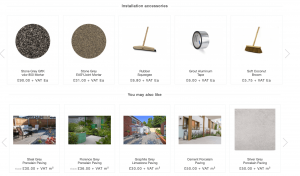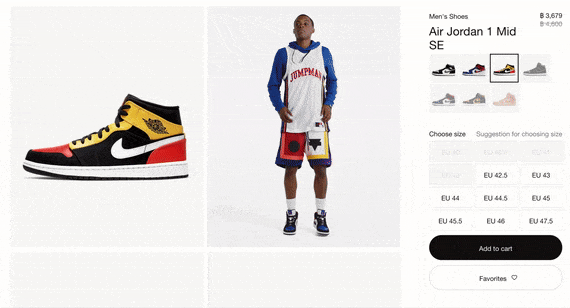E-Commerce Content Tips to Delight your Users, and Google!

At the time of writing, the world is currently gripped by the coronavirus pandemic. This has affected businesses in an unimaginable way in which they would never have been prepared for. The pandemic has re-emphasised the idea that businesses, who sell products or services with an online demand, should have an optimised and effective online store to help reduce the financial impact of just relying on traditional walk-in services.
E-commerce platforms, such as Shopify, Woo-commerce and Magento, are some of the most popular platforms that offer e-commerce integration out of the box which has made it easier than ever for businesses to embrace e-commerce. However, it’s up to you to make sure that your website is tweaked, adapted, and optimised for e-commerce SEO, as well as for users.
Content, specifically copy, is an opportunity where it doesn’t require a technical wiz to make improvements, just the need of somebody that has extensive knowledge about the business and its products.
The importance of comprehensive content is highlighted in this quote by Google’s John Mueller:
“If you make it hard for search engines to figure out what your pages are about, it would be normal for them to struggle to figure out how your site is relevant for users.”
The most common commercial pages that have the potential to generate substantial organic traffic are category pages and product pages. Below I’ll detail some of the techniques that can be used to improve the content on each of these types of pages to boost your ranking potential in the search engine results pages.
Category pages
Due to the broad nature of category pages, compared to individual product pages, which are usually more niche, category pages present the opportunity to rank for keywords with significant search volume.
Unique category descriptions
At the very minimum, you need to write a top-level paragraph which offers users, and Google, context about the topic of the page.
Here is a great example from Asos, on their Men’s shorts page.

This top-level introductory paragraph also allows you to naturally include your target keyword(s) within the heading and body text while also providing the opportunity to link to any other related and important category pages.
FAQs
Another opportunity, where appropriate, is to include FAQs. FAQs can be generated via a combination of analysing in-house data of common questions consumers ask about a particular category and also by performing keyword research.
We recently put together a new nutrition DNA testing page for a client and by performing keyword research we identified some core questions that users were asking online around nutrition DNA testing. Free tools such as Answer the public and Also Asked are great for identifying a range of potential FAQs.

Related Articles
Adding links to your related articles around the particular category is great for showcasing your expertise around the topic; increasing your topical relevance to Google while also keeping users engaged and satisfied.
Here is an example of Mobiles.co.uk’s Apple phones page in which they link to their related in-depth guides.

Product Pages
Product pages can be difficult to manage sometimes due to the vast number and range of products that an e-commerce website may have in its inventory. Due to a potentially large amount of pages, it’s wise to conduct keyword research to determine the search volumes associated with each page to inform you of which pages should be deemed a priority.
Unique product descriptions
The key for product descriptions is to make sure they are as unique as possible so Google doesn’t have a difficult time distinguishing between a similar range of products.
Many e-commerce sites will also just copy and paste the product description from the manufacturer’s website which falls into the issues associated with duplicate content, this is not recommended.
Customer reviews
More than 82% of US consumers check reviews before buying anything online according to Pew Research.
User-generated reviews are great for prospective buyers by adding the opinions of a third party, in this case, real users of the product. User-generated reviews are also beneficial by keeping the product page fresh with new content.
However, make sure to moderate the reviews to ensure no spam comes through.
Multimedia
Where appropriate, multimedia, such as a range of high-quality images as well as video, provide another source of content to showcase the product to the user. As well as improving conversion rates, a range of different types of content goes some way to satisfying the user, which ultimately Google want to do when you visit a website via their search engine.
Related product and accessories
Product pages sometimes provide the opportunity to cross-sell other related products and accessories. Similar to, for example, if you were buying your first HDTV in an electronics store, most likely you would be up-sold related accessories such as HDMI Cables, TV Mounts or TV Stands.
A related product and accessories section on your product pages works in the same way, for instance, the example below is taken from paving slabs product page which offers extras for installations and other related products if the user isn’t fully satisfied.

These are just some of the tips for improving the content on your E-commerce store, for information on how Minty Digital can optimise your e-commerce store, get in touch with our team!

